#Dalea purpurea
Explore tagged Tumblr posts
Text
My Garden Flowers Part 5
All photos mine. The blue flax is edited for colour since the camera didn't catch it and washed it out. The curlytop smartweed is edited for contrast and the scarlet bee balm is edited for colour since that phone camera sucked.
























In order of appearance:
121. Whorled Milkweed (Asclepias verticillata) Flowering for the first time this year! I hope she gets pollinated.
122. Blue Flax (Linum lewisii) Finally got this thing to flower. She doesn't live very long and my first two attempts grew just fine but didn't flower and therefore didn't reseed. Here's hoping this one does.
123. Lakeside Daisy (Tetraneuris herbacea) Not pictured as she hasn't flowered yet.
124. Fringed Sagebrush (Artemisia frigida) Took me several tries, including the wrong species sent, before I got one to take off but she survived the winter and is doing nicely this summer!
125. Black-Eyed Susan (Rudbeckia hirta) Sadly she didn't make it through the winter and I'll have to try another area, but she certainly looked nice while she was here.
126. Gray-Headed Coneflower (Ratibida pinnata) Flowering for the first time this year! Also my first successful attempt as BOTH my previous plants were cut where I had them. Two in a fucking row. She doesn't even look that weedy. I don't know what the fuck.
127. Narrow-Leaved Vervain (Verbena simplex) Sadly she didn't survive the winter. Trying her in another place and she seems to like it so far.
128. Pink Evening Primrose (Oenothera speciosa) Well, she certainly understood the assignment to prettify that area, though I had no idea she'd spread so much. My other Oenothera species are much more well-behaved. lol
129. Streamside Fleabane (Erigeron glabellus pubescens) Lovely little thing in the small spot I have her in. An ideal small space plant.
130. Green Comet (Asclepias viridiflora) Now she flowered last year but didn't make pods in spite of all the ants who came to visit. Hoping she'll make pods this year!
131. Spike Goldenrod (Solidago simplex) She looked nice here but didn't survive the winter. I'm trying one in another spot.
132. Prairie Dropseed (Sporobolus heterolepis) Not pictured as I haven't got any pictures yet.
133. Blue Leadplant (Amorpha canescens) Not pictured as she hasn't flowered yet.
134. Clammy Groundcherry (Physalis heterophylla) She also spread much more than I expected, but I don't mind. Potentially lots of ground cherries!
135. White Meadowsweet (Spiraea alba) A bit leggy as a bush, though that might be due to where I have her, but the flowers are yet again white and lacy and loved by pollinators.
136. Curlytop Smartweed (Persicaria lapathifolia) I didn't plant that, and wish I had gotten a better photo of her because she sadly never reseeded until this year, and her daughter is not quite as impressive as she was.
137. Slender Mountain Mint (Pycnanthemum tenuifolium) She is no longer with us as of this year and I'm not sure why. I've planted fireweed in that spot now and we'll see how she does. Maybe I'll plant slender mountain mint in the back instead.
138. Fireweed (Chamaenerion angustifolium) Not pictured as she hasn't flowered yet.
139 Michigan Lily (Lilium michiganense) Every year I end up with more! Springtime flower only and then she fruits.
140. Canada Columbine (Aquilegia canadensis) one of the relatively safe members of the buttercup family. You can pop a flower or two into your mouth for a refreshing sweet snack.
141. Prairie Smoke (Geum triflorum) Probably the most showy of her genus. Avens flowers tend to be small white or yellow on leggy stalks, but prairie smoke has red parts around white flowers that eventually become fluffy seedheads, hence the name. Plus the leaves turn red in the fall so very nice all around.
142. Golden Alexanders (Zizia aurea) She can get leggy in the summer, but the bright yellow flowerheads are nice in spring.
143. Canada Wild Rye (Elymus canadensis) She didn't make the winter. Again I think it was too dry. She may have reseeded, however, or else I've let a clump of crabgrass stay for far too long.
144. Purple Prairie Clover (Dalea purpurea) She's another one I had to get from a Manitoba company because no one in Ontario was selling this species (some do now though). She is thriving!
145. Wild Mint (Mentha arvensis) The area I have her in is fairly dry and blocked by sidewalk. She does occasionally get in the cracks but is otherwise well-behaved in her enclosure. The same cannot be said for the one I gave to my friend for her landlady's plant war. Apparently she's taken over the neighbourhood. Well done, native mint.
146. Scarlet Beebalm (Monarda didyma) She lived well for one year in that area and then never again. I'm trying her in a different spot where she hasn't flowered yet but seems to like it.
147. Purple Coneflower (Echinacea purpurea) That's a cultivar. I did eventually manage to get the wild type, but don't have a picture yet.
148. Canada Garlic (Allium canadense) In my humble opinion these are much tastier than ramps. They usually don't make flowers, opting to make bulbs instead, but this was a nice exception. They're springtime only, though.
149. Annual Fleabane (Erigeron annuus) I rescued her from a fallow area. Sadly she didn't reseed but I don't feel bad because that area is completely under development now and her offspring wouldn't have made it anyway. I gave her a chance.
150. Northern Bedstraw (Galium boreale) Not pictured as she hasn't flowered yet.
#blackswallowtailbutterfly#my photos#photography#my garden#garden flowers#native plant gardening#native flowers of Carolinian Canada and USA#Asclepias verticillata#Linum lewisii#Artemisia frigida#Rudbeckia hirta#Ratibida pinnata#Verbena simplex#Oenothera speciosa#Erigeron glabellus pubescens#Asclepias viridiflora#Solidago simplex#Physalis heterophylla#Spiraea alba#Persicaria lapathifolia#Pycnanthemum tenuifolium#Lilium michiganense#Aquilegia canadensis#Geum triflorum#Zizia aurea#Elymus canadensis#Dalea purpurea#Mentha arvensis#Monarda didyma#Echinacea purpurea
6 notes
·
View notes
Text
Spring sprouts! We're due for frost or near-frost later this week, and it might be the last one so I'm getting these babies ready for planting:

Spiderwort sprouts with sand coreopsis in the background. These are by far the most mature of my seedlings
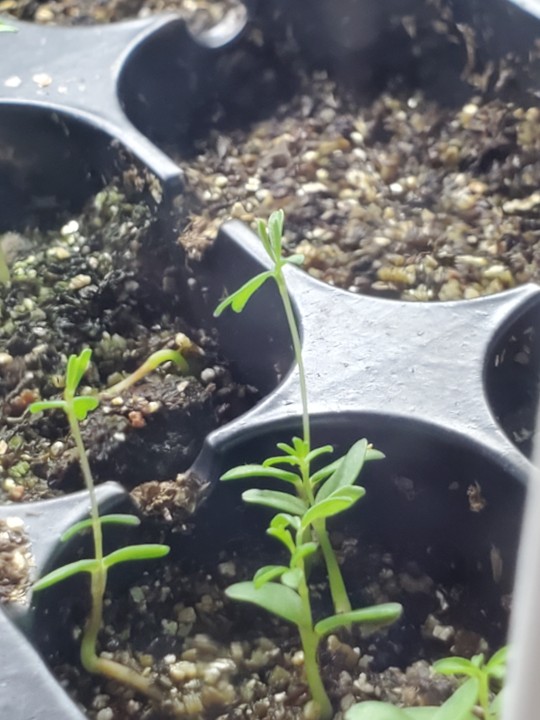

Prairie clover & a variety of bee balms, which I planted only a few weeks ago--they did indeed germinate as easily as promised and are growing crazy fast
#not to brag but i mixed my own fertilizer for the spiderworts and they seem to be thriving#ohio spiderwort#tradescantia ohiensis#sand coreopsis#coreopsis lanceolata#prairie clover#dalea purpurea#dotted bee balm#monarda punctata#wild bergamot#aka regular bee balm#monarda fistulosa#midwest native plants#native plants
0 notes
Text

20230626 West Branch Iowa trail
PURPLE PRAIRIE CLOVER Dalea purpurea
0 notes
Text
I've been growing a lot of plants for work and my own little nursery business! I grow a lot of Kentucky native species and some houseplants and terrarium plants. These are photos of a lot of the native stuff I'm growing from mostly locally collected seeds and some from Roundstone, a vendor who generally sources from our region.
Species pictured here are Dalea purpurea, Oenothera macrocarpa (native-adjacent), a species of Chelone (either glabra or obliqua), Eutrochium fistulosum, Helianthus mollis, and a photo of some Paxistima canbyi (S1G2) from the Atlanta Botanical Garden in a greenhouse at work that we're caring for until they can get planted out at a site in central KY!
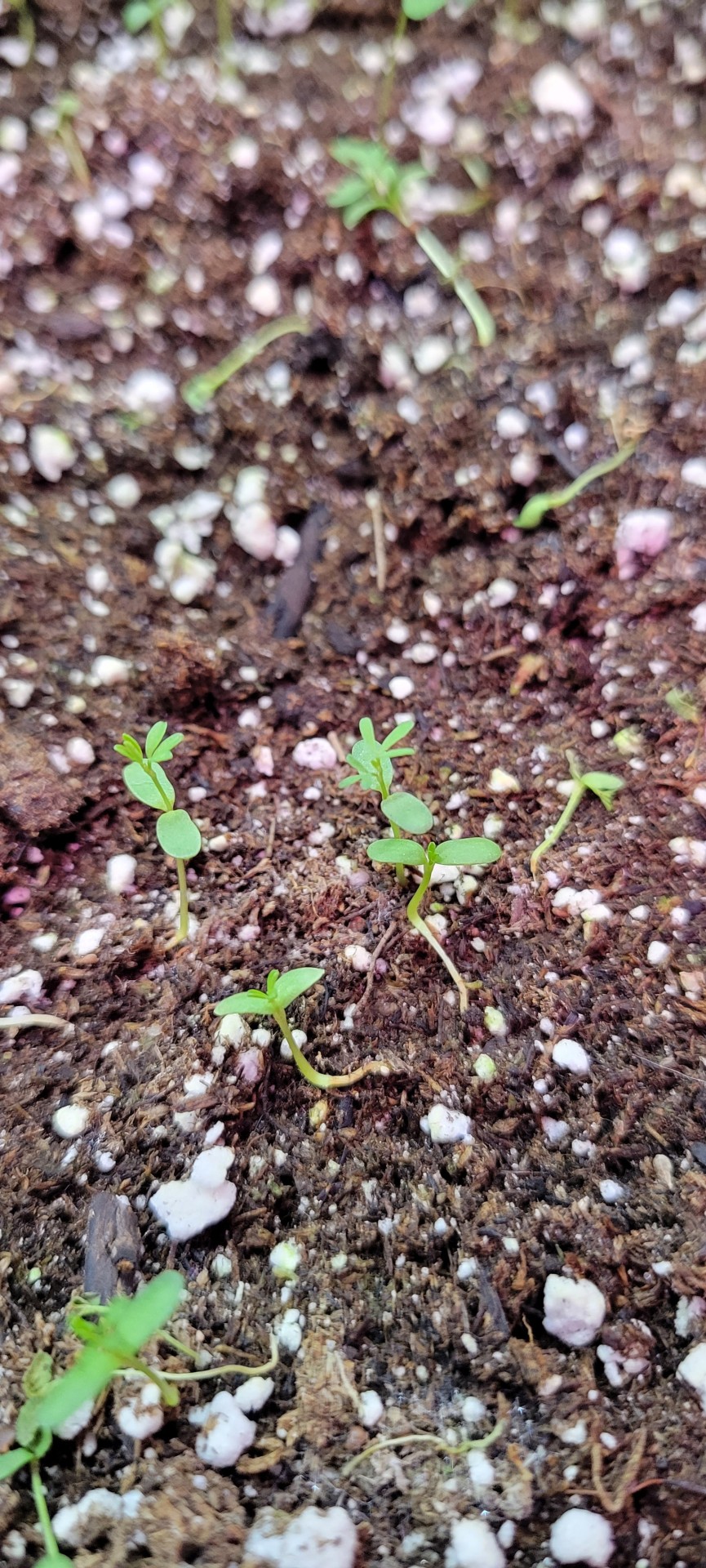
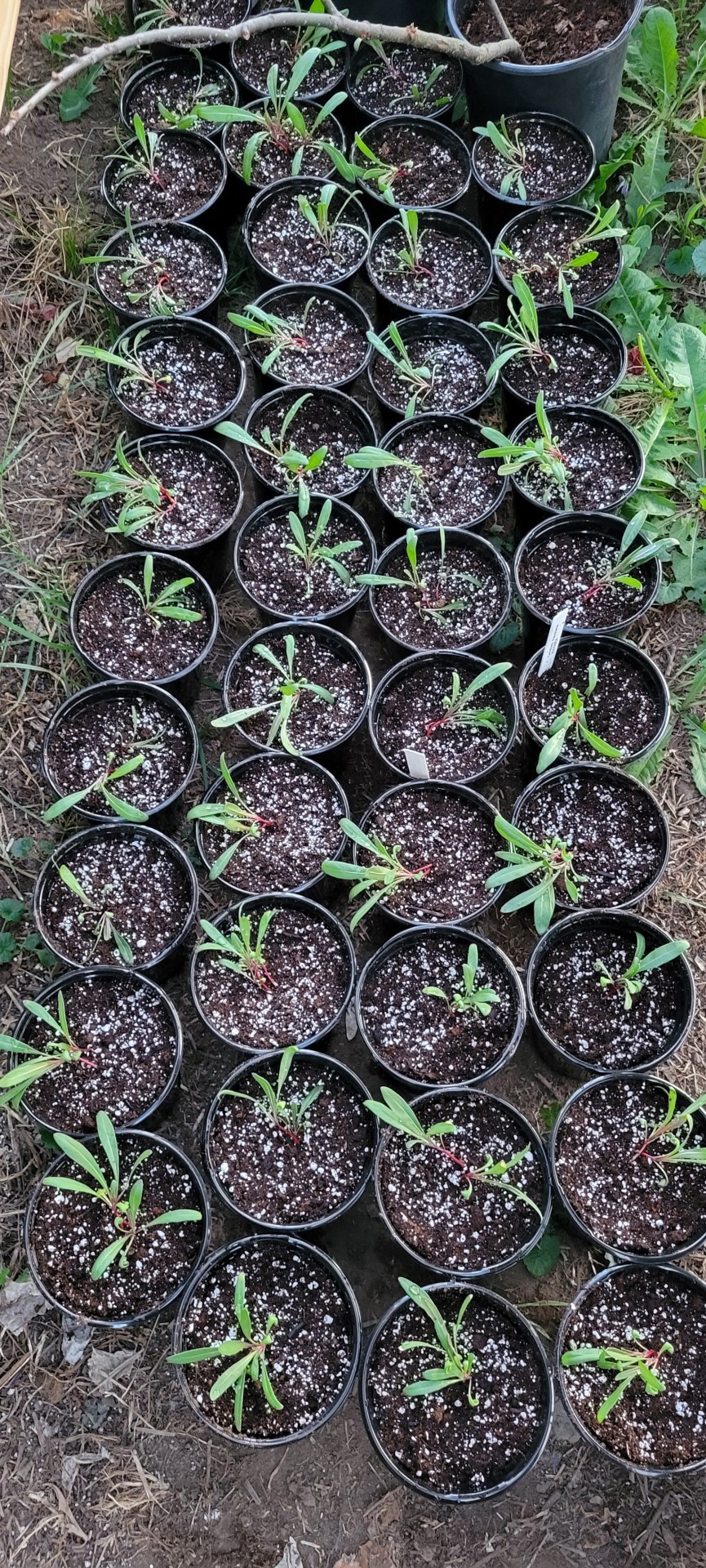
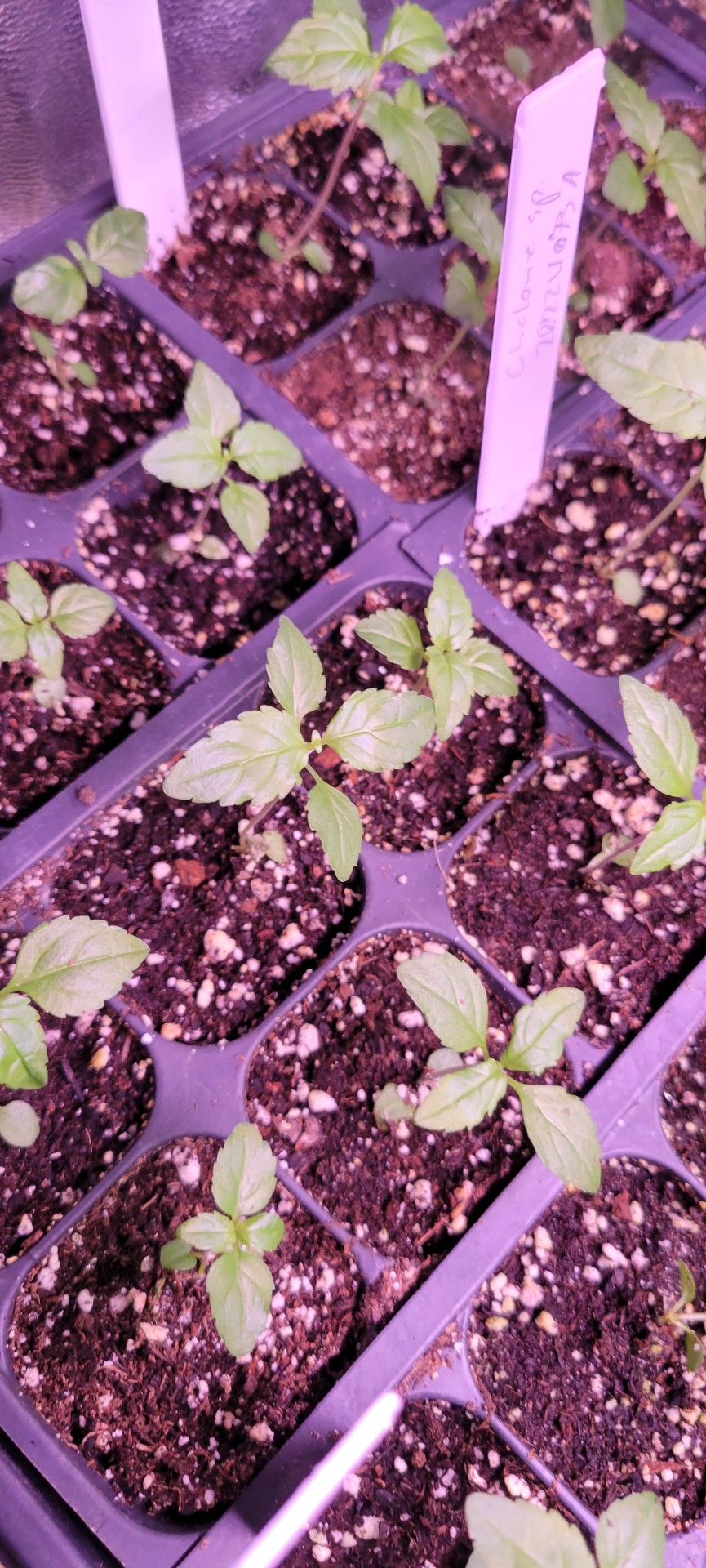
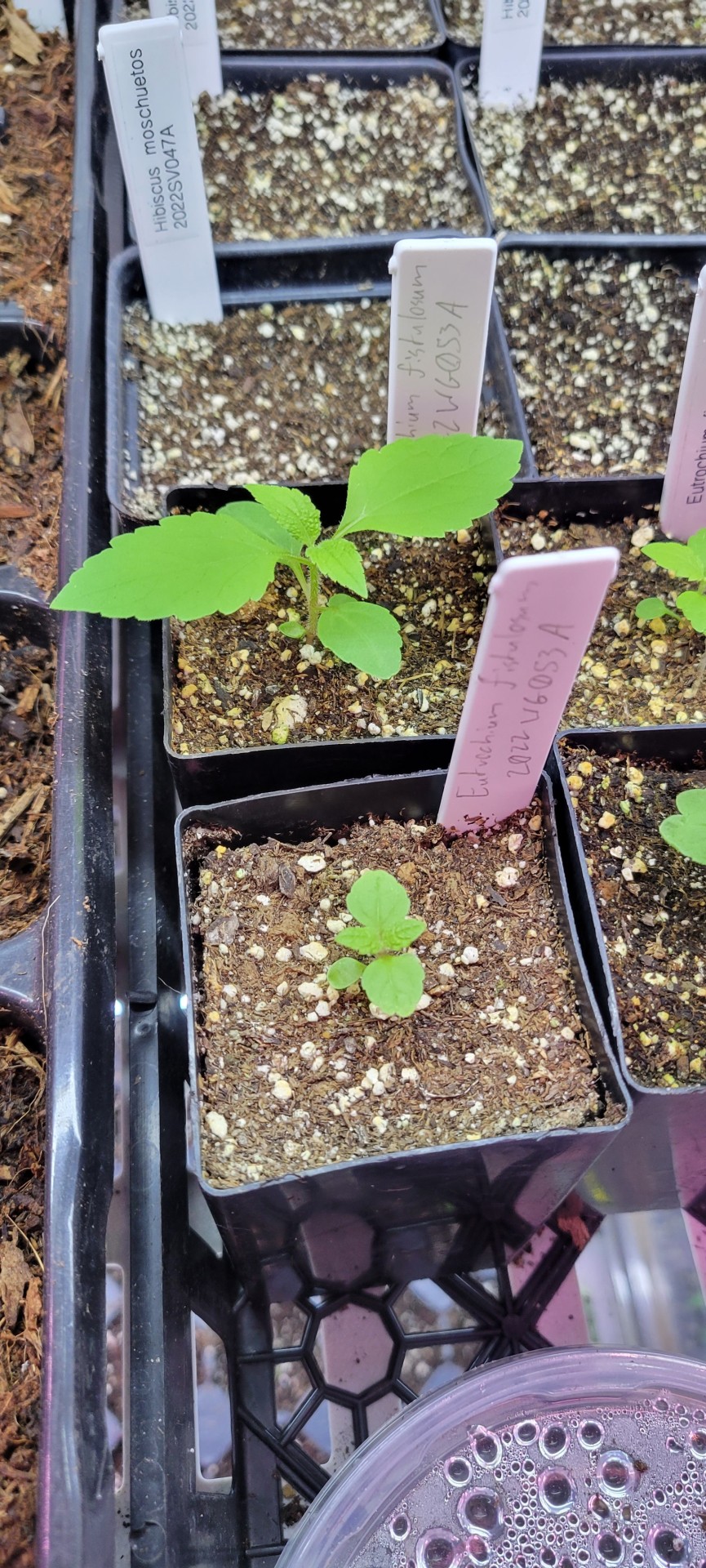
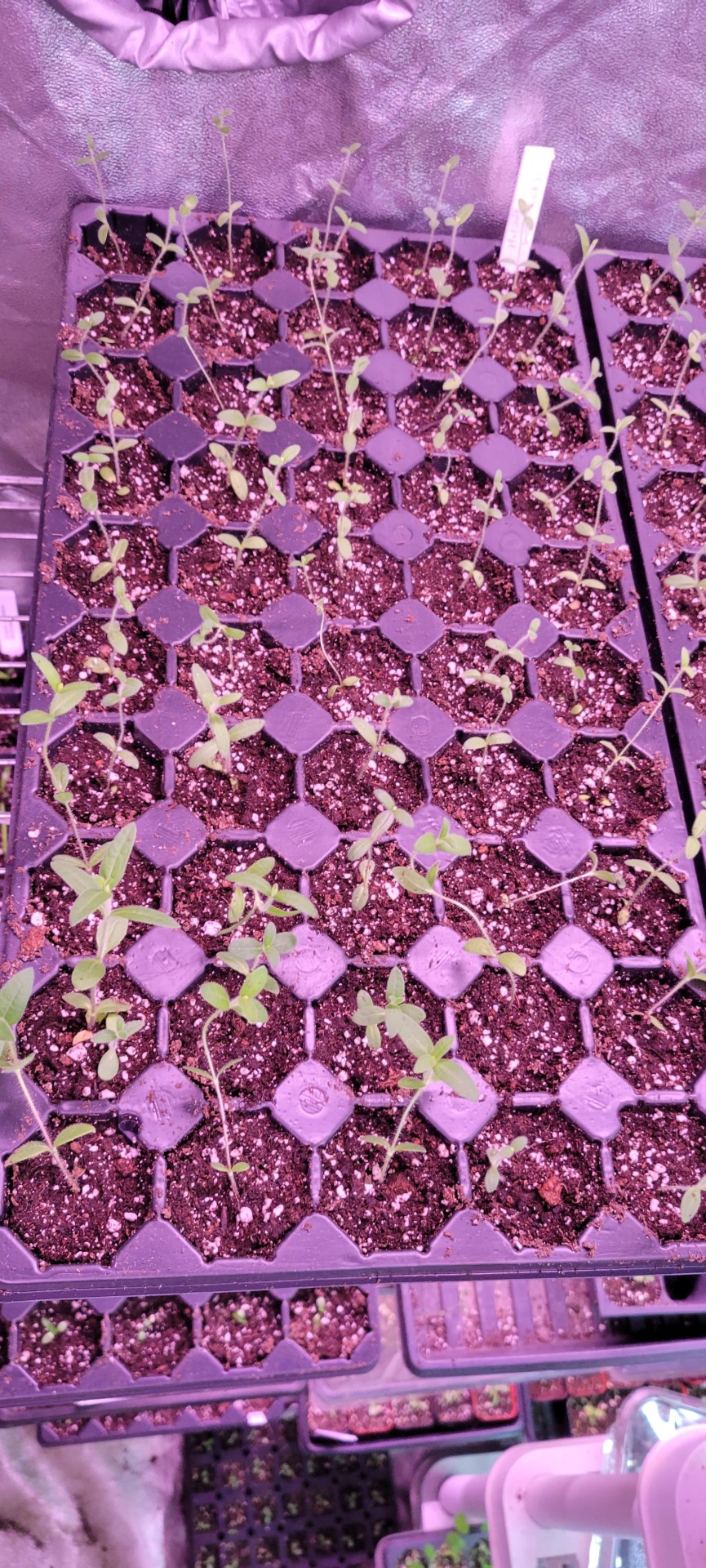
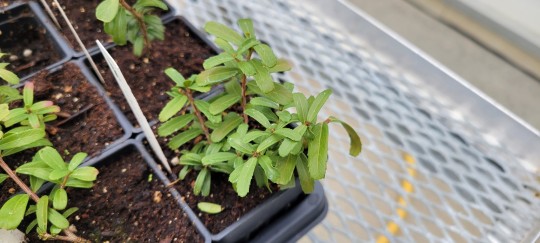
#botany#floral#foraging#kentucky#kentucky plants#plantblr#conservation#plant conservation#arboretum#plantcore#botanic garden#botanical
0 notes
Text


Dalea purpurea, purple prairie clover, is a fun Midwestern native that doesn’t really look like a member of the pea family, much less a clover. While in truth, it’s not really a clover, it IS a member of Fabaceae. It’s a fairly important prairie plant, too! It’s well-adapted to fire, fixes nitrogen in the soil, and is highly nutritious - even humans can eat the leaves. Insect pollinators love it, too!
#plants of iowa#this is a purple prairie clover support post#dalea purpurea#purple prairie clover#botany#native plants
73 notes
·
View notes
Photo


Dalea purprurea in habitat, notice how short the peduncle is on normal D. purpurea vs. var. arenicola. check cedar-glade.tumblr.com/tagged/dalea for ref. back to it. For some reason this normal species type is mostly in shade in Oklahoma and seems to be limited to this. Also notice that this shortgrass is being take over bye Juniper at the momment due to fire supression. This is an issue as this duff and dense shade prevents both germenation of dust sized light stratified seeds and causes etiolation where as oaks and wild goose plum don’t create enough shade to etiolate.
9 notes
·
View notes
Photo

Purple Prairie Clover (via USFWS Mountain-Prairie)
#Purple Prairie Clover#Dalea purpurea#Dalea#Faboideae#Fabaceae#Fabales#flowers#plants#clover#prairie#Audubon National Wildlife Refuge Complex#North Dakota
32 notes
·
View notes
Photo

Purple Prairie Clover (Dalea purpurea)
IAT, Swamplovers’ segment, WI, 7-4-17
#purple prairie clover#dalea purpurea#flower#wildflower#original photographers#photographers on tumblr#imiging#nature photography
16 notes
·
View notes
Photo

Dalea purpurea (Prärie-Klee)
7 notes
·
View notes
Text
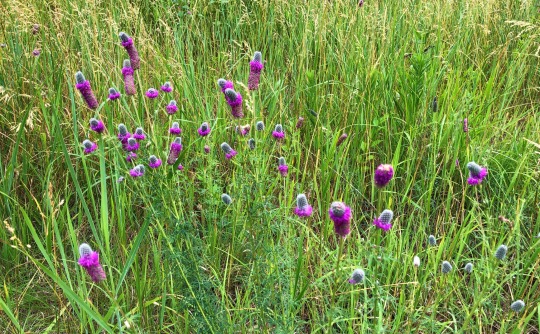

Dalea purpurea (purple prairie clover) and Verbena stricta (hoary vervain) in a prairie restoration project in my neighborhood
5 notes
·
View notes
Text
Native Plants in Canada and Nurseries that Carry Them
Time to open my first box of new plants this year! :D
For those who would like to buy native plants for your own garden, check out the USDA site, which will show you what regions a given plant species is native to. I use it often when I find a species I’m curious about and have added many plants to my personal wishlist this way. Just use the “basic search” on the right. Keep in mind though that the spelling of the species name has to be exact or no results will come up. Sometimes there’s disagreement on whether a species name ends in “us” “a” “is” or “um” so I sometimes just search for the genus name and go through the list that comes up to find the species.
These are the places I order from (I am in Ontario, but many of them ship elsewhere in Canada):
ALCLA Native Plants - First time ordering! They’re in Alberta but will ship elsewhere and carry a wide selection of plants, a number of which include Ontario in their natural range as well as Alberta, and some of which I haven’t found available anywhere else.
Bamboo Plants - They’re in Ontario but will ship elsewhere. They do not specialize in native plants but they do carry a number, including things like squashberry (Viburnum edule), which is very difficult to find anywhere else.
Botanus - They’re in British Columbia but will ship elsewhere. They do not specialize in native plants but they carry a few species and the ones I got were healthy. Worth giving a try.
Connon Nursery - They don’t ship, but they do have several locations in Ontario and possibly elsewhere. They don’t specialize in native plants but they do carry a large number of them. Definitely worth checking out if you drive or can get a ride.
Hidden Habitat - They don’t ship anymore, but do local delivery in their area of Ontario and offer pickups. They’re about an hour and 45 minutes away from Toronto so if you live in the GTA and can get a ride, it would be worth checking out. They have witch’s hobblebush (Viburnum lantanoides) and partridgeberry (Mitchella repens), which are hard to find anywhere else.
Hortico - First time ordering! They ship across Canada as far as I know. They don’t specialize in native plants but have a huge selection, including some that are hard to find elsewhere, such as squirrel corn (Dicentra canadensis) and fairy spuds (Claytonia virginica).
Lacewing - First time ordering! Located in the GTA. They don’t ship, sadly but if you live close to the GTA maybe you can get a ride over. So far they’re the only nursery I’ve been able to find that carries horseflyweed (Baptisia tinctoria).
Native Plants in Claremont - They only ship in multiples of 6 (and I think only in Ontario) and the plant selection they offer for that isn’t huge (but definitely worth looking at if you’re just starting out). However, their location isn’t terribly far from Toronto, so if you can get a ride out there, the selection is much wider and includes some hard to find species.
Native Plant Nurseries - First time ordering! They’ll deliver within the GTA with a minimum order between $50 and $75 (not hard to reach if you’re really trying to fill a space) and a delivery fee as well. It’s possibly less if you’re closer to their location. Very nice selection and some hard to find species such as white lettuce (Nabalus alba) and purple prairie clover (Dalea purpurea).
North American Native Plant Society - First time ordering! They have a few locations and each location as I understand it has a single day to pick up in the spring. If you become a member you can pre-order plants that you pick up that day as well. They have a large number of species, some which are very hard to find, and if you become a member they offer seed exchanges.
Nutcracker Nursery - They’re in Quebec but ship elsewhere. They carry trees and bushes which they ship bare root wrapped in clay and paper for moisture. They don’t specialize in native plants, but carry a number and are thus far the only nursery I know of that carries native burning bush (Euonymus atropurpureus). Your standard burning bush (Euonymus alatus) found in most garden centres is not native and is invasive in some areas, which makes getting my hands on E. atropurpureus a priority for me, but sadly it’s not available yet this year. Hopefully soon though!
Ontario Native Plants - They only ship in Ontario, and only in multiples of 4. They have a nice selection and every year they try out a new and hard to find species. If you’re looking for appearance and aren’t specializing in edibility, I would highly recommend their new rock harlequin (Corydalis sempervirens).
Origin Native Plants - First time ordering! They’re in Ontario, not sure if they ship elsewhere. I think their minimum is 10 plants. They have a number of hard to find species, including Canada lily (Lilium canadense), wild yam (Dioscorea villosa/quaternata), and wild basil (Clinopodium vulgare).
Paramount Nursery - They have locations in Toronto, Ottawa, and Montreal, so if you live close to any of these areas you can get a free delivery with a $100 minimum order. They don’t specialize in native plants but carry a large number, including Canada buffalo berry (Shepherdia canadensis), and bog rosemary (Andromeda polifolia).
Phoenix Perennials - They’re in British Columbia but ship Canada-wide as far as I know. They don’t specialize in native plants but have a large number, including some extremely hard to find species such as green dragon (Arisaema dracontium). They ship potted plants that they feel have grown hardy enough to survive a long trip, but there’s a greater chance of plant damage.
Prairie Originals - They’re in Manitoba and will ship elsewhere but not every year (sadly not this year). They specialize in plants native to Manitoba but many of these are native to Ontario as well. They carry a wide selection, and yes that includes some that are hard to find anywhere else.
The Pond Experts - First time ordering! They ship Canada-wide as far as I know. They don’t specialize in native plants but carry some native species, several of which are very difficult to find elsewhere, such as pickerelweed (Pontederia cordata) and duck potato (Sagittaria latifolia). As many of the plants they carry are marginal plants rather than floating ones, you don’t need a pond for them, just make sure the area you put them in has poor drainage and isn’t shielded from rain. And water them extra when watering your garden. If possible, put them next to the downspout of the eavestrough.
Wild About Flowers - They’re in Alberta but ship Canada-wide as far as I know. They specialize in plants native to Alberta but many of these are native to Ontario as well. Their minimum is 8 plugs, and they’re also teamed up with Wright Nursery which is more trees and bushes and requires a minimum of 8 plugs as well.
For shipped plants, please don’t hold it against the nursery if some of them don’t make it through the journey. They’re all trying their best to make sure you get plants that will survive in your garden:
Bare root bushes are easier to stack in a long box which reduces chance of damage. It’s also very easy to dig a hole to plant them in and there’s no chance of them being root-bound. If, however, they run out of moisture on the way, they might not make it. Alternatively, being packed in clay and paper they might develop mould, which will kill them.
Plugs are extremely easy to plant, especially if you want to plant in a small space. They’re young that being mildly root bound won’t be a huge problem. They’re unlikely to be damaged in transit. However, because they’re so young and in such a small amount of soil, they can run out of moisture quickly, or perish without the sunlight. It’s also easier to mix up the species. For example, young goldenrods and asters can look very similar.
Potted plants have begun to establish themselves and so are much better able to handle a couple days without water or a week without sunlight. However, there’s a non-zero chance they’ll be extremely root-bound, which may kill them even after you’ve planted them. And it’s easier for them to get damaged in transit.
As you can see, there are benefits and drawbacks to each method, and this is reason some nurseries won’t ship live plants at all. I for one, not having a car, am grateful for those that do.
Now...to find out what’s in my box (from Hortico)!
#native North American species#native Canadian plants#native Ontario plant species#native Canadian plant nurseries#list of nurseries selling native Ontario plants#gardening#native garden
25 notes
·
View notes
Text
Spring sprouts! We're due for frost or near-frost later this week, and it might be the last one so I'm getting these babies ready for planting:
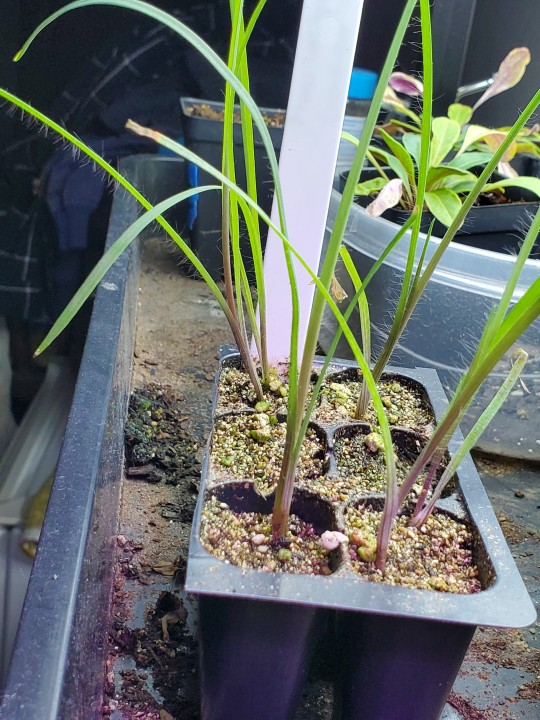
Spiderwort sprouts with sand coreopsis in the background. These are by far the most mature of my seedlings
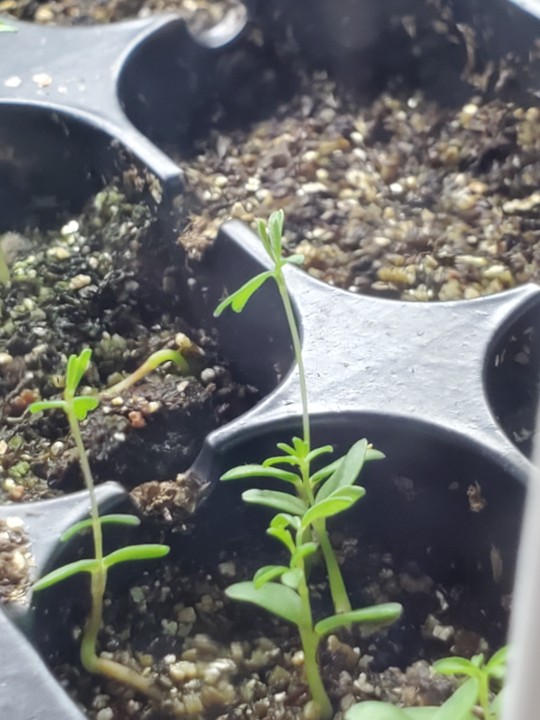
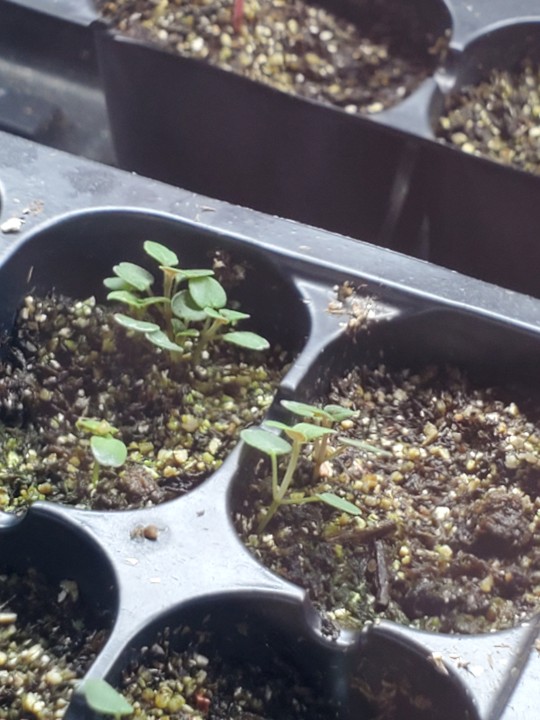
Prairie clover & a variety of bee balms, which I planted only a few weeks ago--they did indeed germinate as easily as promised and are growing crazy fast
#not to brag but i mixed my own fertilizer for the spiderworts and they seem to be thriving#ohio spiderwort#tradescantia ohiensis#sand coreopsis#coreopsis lanceolata#prairie clover#dalea purpurea#dotted bee balm#monarda punctata#wild bergamot#aka regular bee balm#monarda fistulosa#midwest native plants#native plants
1 note
·
View note
Photo

The Purple Prairie Clover (Dalea purpurea) is in full bloom at the Bearbower Sand Prairie. A pollen-laden Brown-belted Bumble Bee (Bombus griseocollis) was taking advantage of the abundant pollen source.
#Brown-belted Bumble Bee#bumble bee#insects#Hymenoptera#nature#Purple Prairie Clover#wildflowers#plants
34 notes
·
View notes
Photo

Purple Prairie Clover (Dalea purpurea), Chain-O-Lakes State Park, Lake County, Illinois, USA
photograph by Andrew St. Paul | Flickr CC
34 notes
·
View notes
Photo


Purple prairie clover (Dalea purpurea) is a species of flowering plant in the legume family.This plant is adapted to a habitat with periodic wildfires. In some areas, it depends on fire to clear encroaching woody vegetation, as it cannot tolerate shade.
18 notes
·
View notes
